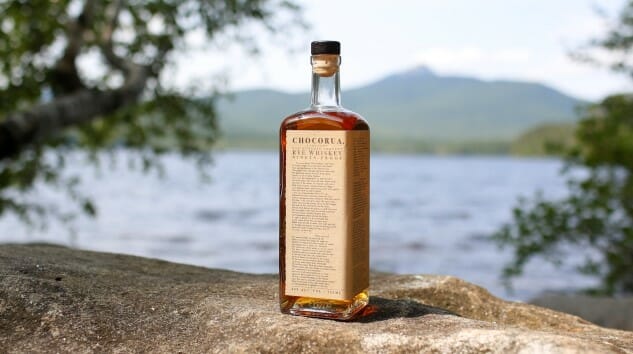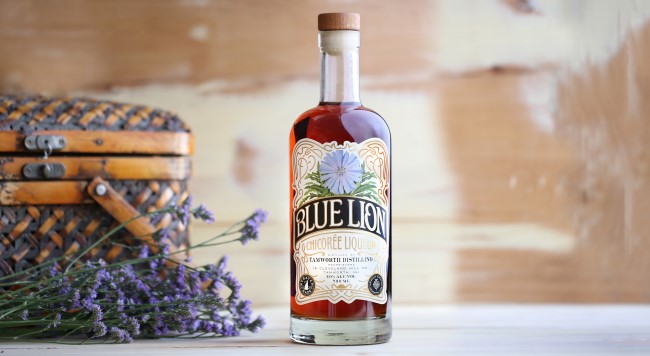Tasting Three Spirits From New Hampshire’s Tamworth Distilling
Photos via Tamworth Distilling Drink Features whiskey
For a microdistillery, it helps to have a central tenet, a philosophy around which your line of spirits can be based. As the number of small distilleries in the country continues to rise, “we like to make whiskey” can be a tough sell in terms of originality. Much more memorable are the distillers who take a concept and make it stick.
For New Hampshire’s Tamworth Distilling, that concept seems to be “scratch made.” Moreso than most distilleries, they have a focus on locally grown and processed components. In the company’s own words, they make spirits from “local, house-milled grain, pure water, herbs and botanicals from the woods and our garden, and local fruits and vegetables. All of our grains are sourced from farms within a ~150 mile radius during the harvest season, and milled in-house, on demand, for the freshest flavor.”
The distillery puts that ethos to work making a wide variety of spirits and liqueurs, including gin, whiskey, brandy, applejack and fruited/spiced cordials of various descriptions. Of course, though, it’s entirely possible that you’ve heard about the distillery at some point thanks to its most infamous creation: Eau de Musc, a bourbon infused with the musky castor gland of the North American beaver. The mere existence of Eau de Musc made for plenty of funny headlines, but we’re a bit more interested in checking out the distillery’s less audacious products.
With that in mind, we sat down to taste three spirits from Tamworth. I was offered several samples by the distillery, and chose the following:
— Chocorua Straight Rye Whiskey, “made from a single crop of organic rye grain from Maine distilled in the sour mash style,” and aged for at least two years. This is a 100 percent rye whiskey that weighs in at 45 percent ABV (90 proof).
— Old Hampshire Applejack, which “starts with a blend of 100 percent grown and pressed New Hampshire Apples (including Crispin, Cortland, Macintosh, and Honeycrisp varietals) that are then fermented with wine yeast. Following the initial stages, the cider is then twice distilled in an alembic still before it’s finished with a two year charred barrel aging process.” It’s also bottled at 45 percent ABV (90 proof).
— Blue Lion Chicorée Liqueur, an unusual, amaro-like product that combines “roasted chicory root with rye seeds, cinnamon, dandelion root, and cane sugar for a bittersweet, spicy flavor.” This is intended as an aperitivo or cocktail ingredient, and weighs in at 20 percent ABV (40 proof).
So, let’s get to tasting.
Chocorua Straight Rye Whiskey

As I noted above, this is a 100 percent rye whiskey, which is still something you don’t see terribly often, outside of the likes of WhistlePig. One often sees the lack of certain enzymes in rye offered as a reason why a small amount of malted barley is typically included in otherwise high-rye formulations, such as MGP of Indiana’s ubiquitous 95-5 blend. It stands to reason that 100 percent rye is probably a bit harder, but some distilleries have certainly made it work. And in Tamworth’s case, it produces a really lovely whiskey.
This is a two-year rye that is clearly punching well above its weight. On the nose I’m getting fresh rye bread graininess and big pepper (which I enjoy), followed by florals, fennel and a touch of red fruitiness. On the palate, this one opens up a touch hot, with a fairly complex melanage of mint, grassy, peppery and spicy notes before a richer, molasses-tinged character moves in. Residual sweetness is moderate, but the lingering baking spices on the finish are distinctive. I’m not sure the distillery will specifically appreciate WhistlePig comparisons, but it’s frankly what I’m most reminded of—younger WhistlePig Rye, and I mean that as a compliment.
The complexity of the spice and rye profile here, coupled with a solid backbone of alcoholic heat, make this a no-brainer for classic rye cocktails. Chocorua Straight Rye drinks quite well neat, but I think it would absolutely shine in your next Manhattan or Boulevardier. At an MSRP of around $55, you could even consider it a slightly more budget-conscious WhistlePig replacement, although that’s still on the high side for a two-year-old rye. Still, I haven’t tasted many two-year-old ryes that could compete with this. Of the bottles I tasted, this rye was the star of the show.
Rating: 8.6
Old Hampshire Applejack

My experience with applejack is sadly minimal, which is one of the reasons I selected this sample. In that sense, I’m hardly alone as a millennial—as a segment, we seem to be largely out of touch with applejack as a spirit, one that was considerably more common a generation or two ago. After all, the Jack Rose cocktail (applejack, lemon juice, grenadine) was once commonplace enough to be listed as one of the six basic drinks in author David A. Embury’s influential The Fine Art of Mixing Drinks, but I can’t exactly think of the last time I saw one on a cocktail menu. At some point along the way, applejack just sort of fell away into relative obscurity.
What is applejack, officially? Well, in its modern format it implies distilled hard cider. Cider is pressed and fermented to a high degree via wine yeast, and is then distilled to the expected strength of standard bottled liquors—typically 80 to 100 proof. That distilled spirit may then be consumed unaged, or put into charred oak ‘ala American whiskey. Tamworth’s applejack, Old Hampshire, spends two years in the oak, the same as the Chocorua Straight Rye.
On the nose, I find this one less assertive and immediately distinctive than the rye. There’s definitely some ethanol wafting out of the glass, along with notes of caramel, apple pie filling and a chocolate note that reminded me faintly of Tootsie Rolls. On the palate, what surprisingly jumped out at me is a surprisingly distinct anise note—licorice-like, followed by a wave of red-green apple fruitiness and finishing with plenty of vanilla. All in all this is an interesting spirit, although one whose applications I’ll still have to explore some more. Perhaps I’ll go out and grab some grenadine to make that Jack Rose, so I can at least say I’ve had one. Ultimately, the applejack strikes me as an interesting novelty, but it can’t boast the complexity of the rye.
Rating: 7.5
Blue Lion Chicorée Liqueur

Now this stuff is truly unusual. Made from roasted chicory roots, which most of us (if we’ve been to New Orleans) have only sampled as a supplement to coffee, it’s a neutral spirit that has also been infused with rye seed, cinnamon, dandelion root and cane sugar at the very least. Tamworth compares the result to a European amaro of some kind, but I’ve never tasted any amari particularly similar to this. It is truly unique, although I can’t necessarily say that it proved to be up my alley.
Pungent on the nose, I get a whole bunch of different things: Vanilla bean, red fruit and violets, but also a briny quality that I can only describe as “worcestershire sauce.” On the palate, meanwhile, it presents initially on the sweet side, with herbaceous and floral notes, followed by moderate bitterness. The presence of that bitterness does give it some of the sweet/bitter balance the characterize amari, but never have I had an amaro with these kinds of “savory” qualities. Less immediately present (to my palate) were the roastier notes I was expecting. All in all, the Blue Lion quite frankly left my palate perplexed. I admire whatever Tamworth was trying to do here, but I’m clearly not the market for this particular liqueur. And that’s alright—I’ve still got that lovely rye, after all.
Rating: 6.0
Jim Vorel is a Paste staff writer and resident brown liquor geek. You can follow him on Twitter for more drink writing.